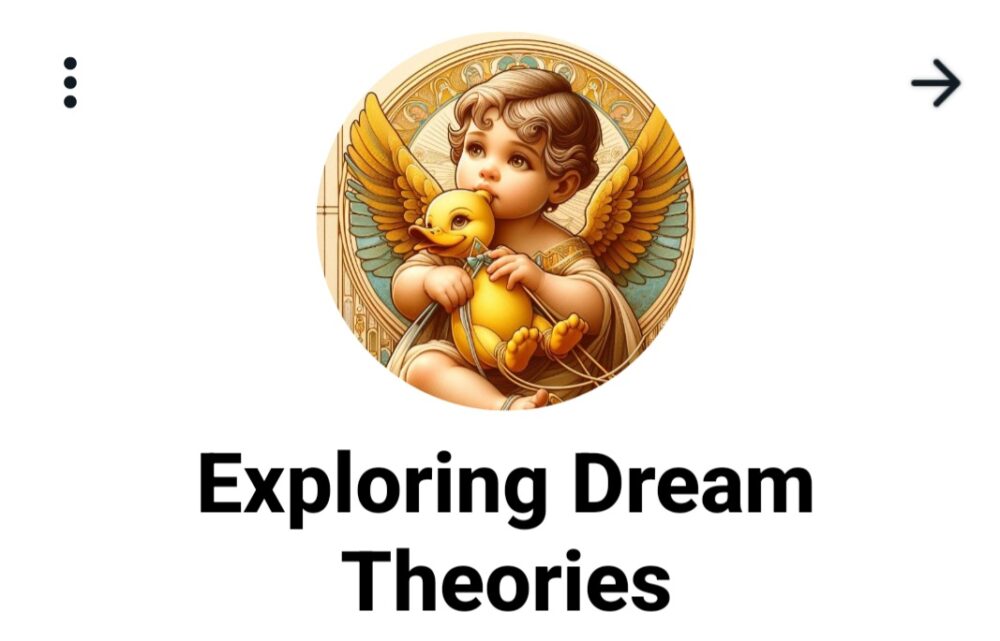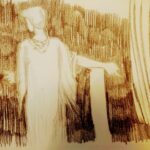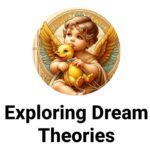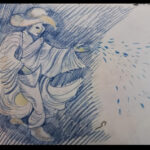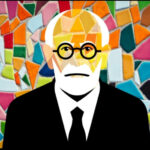Shamanic states of consciousness for the purposes of healing and the development of consciousness
הרצאה שניתנה בכנס של האגודה הישראלית לפסיכוטרפיה אנליטית
על מצבי תודעה במרחב האנליטי.[1]
יפו 21-22 לפברואר 2008.
רות נצר[2]
נעסוק כאן בחוויות שהן טבעיות לנפש, אולם עד כה לא קיבלו את ההכרה והמקום הראוי להן בכתיבה המדעית הפסיכולוגית, וגם אין לנו מושגים מתאימים להכיל ולתאר אותם. אנחנו נפתחים כיום יותר ויותר להכרה במוגבלות יכולתנו להבין את הנפש והיקום, ומכירים במוגבלות המושגים שלנו להבין את הבלתי ידוע, שהרי ה’לא-מודע’ מנוסח בהגדרה שלילית, של מה שאין בו, ושל היותו בלתי ניתן לידיעתנו, ואינו מבטא את מלאות תכניו.
בדיון במצבי תודעה שמאניים נשאל את עצמנו – מה זה ‘לא מודע’? האם יש ‘לא-מודע’ רוחני בנוסף ל’לא-מודע’ המקובל עלינו? אולי נכנה אותו ‘על-מודע’, או ‘לא-נודע’?
האם לא נכון יותר לומר שהלא-מודע הקולקטיבי אינו ‘לא-מודע’ אלא תודעה תת-קרקעית של הנפש הכלל אנושית? אולי במקום להבחין בין ‘מודע’ ו’לא-מודע’ עדיף שנבחין בין התודעה הרגילה לבין תודעה אחרת שאינה מודעת לנו, כאשר התודעה האחרת מכילה את החומרים הקולקטיביים הארכיטיפיים-המיתולוגיים, ואת התודעה המיסטית, הרוחנית והקוסמית.
ועוד נשאל: האם יש גם עצמי לא-מודע? האם יש רק עצמי של היחיד או שיש עצמי בתוך עצמי, כמו בחזיון של יורדי המרכבה במיסטיקה היהודית שראו את היכלות אלוהים כהיכל-בתוך-היכל והיכל-מעל-היכל כאחת. האם יש עצמי של היחיד ועצמי קוסמי שהיחיד נתון בתוכו?
שאלות אלה ישארו פתוחות.
כדי להבין מהם מצבי תודעה שמאניים נגדיר מהו השמאן. בתרבויות שבטיות השמאן הוא הדמות המרכזית בשבט, שממלא את התפקיד המכיל-כול של איש הידע הרוחני והרפואי, איש הדת המתקשר עם הרוחות והאלים, ואיש הטקסים הפולחניים-דתיים-רפואיים של השבט . מגמתו להביא איזון והרמוניה בנפש היחיד, בחברה וביקום. הוא ממלא את התפקיד הארכיטיפי של הכהן, מורה הדרך, החכם הזקן, המכשף-קוסם, המרפא, האמן, והליצן-שוטה כליצן הקדוש . יש בו את השילוב היחודי של יכלת לפרוץ את הגבולות בין התחומים וגם לחבר ביניהם – לנוע בין שמים וארץ ותהום ; בין תחומי התודעה השונים. להבנתי, השמאן בחברה השבטית מגלם את תיפקודי העצמי הקולקטיבי – המרכז הנפשי המארגן, מכוון תהליכים ומרפא – עבור החברה כולה, והוא גם המתווך בין החברה לעצמי הקולקטיבי-השבטי.
השמאן עולה, בחוויתו, בטראנס אקסטטי לשמים או לממדים אחרים, ויוצא למסעות דוגמתם יש רק בעולם המיסטיקאנים. “מסעותיו” אל העולמות הלא-נודעים, אל המציאות הקדושה, מתרחשים במצב תודעה אחר, של דמיון-חזיון-הזיה-התגלות-נבואה.
למאמר המלא
We will address here experiences that are natural to the psyche, yet so far have not received the recognition and place they deserve in scientific psychological writing, nor do we have appropriate concepts to encompass and describe them. Today, we are increasingly open to recognizing the limitations of our ability to understand the psyche and the universe, acknowledging the limitations of our concepts to grasp the unknown, since the ‘unconscious’ is defined negatively, by what it lacks, and by being unknowable, and does not express the fullness of its contents. In discussing shamanic states of consciousness, we ask ourselves – what is the ‘unconscious’? Is there a ‘spiritual unconscious’ in addition to the ‘unconscious’ we are familiar with? Perhaps we should call it ‘super-conscious’, or ‘unknown’? Would it be more accurate to say that the collective unconscious is not ‘unconscious’ but rather a subterranean consciousness of the collective human psyche? Maybe instead of distinguishing between ‘conscious’ and ‘unconscious’, it would be better to differentiate between ordinary consciousness and another consciousness unknown to us, where the other consciousness contains the collective archetypal mythological materials, and the mystical, spiritual, and cosmic consciousness. And we further ask: Is there also an unconscious self? Is there only an individual self, or is there a self within a self, like in the vision of the Merkabah mystics in Jewish mysticism who saw the palaces of God as a palace-within-a-palace and a palace-above-a-palace as one. Is there an individual self and a cosmic self that the individual is part of? These questions remain open. To understand shamanic states of consciousness, we will define what a shaman is. In tribal cultures, the shaman is the central figure in the tribe, fulfilling the all-encompassing role of the spiritual and medical knowledge holder, the religious figure who communicates with spirits and gods, and the person who conducts the tribe’s religious-medical rituals. His aim is to bring balance and harmony to the individual’s psyche, to society, and to the universe. He fulfills the archetypal role of the priest, the guide, the wise elder, the sorcerer-magician, the healer, the artist, and the fool or holy fool. He has the unique ability to break the boundaries between the five domains and to connect them – moving between heaven, earth, and the abyss; between different realms of consciousness. In my view, the shaman in tribal society embodies the collective self’s functions – the psychic center that organizes, directs processes, and heals – for the entire society, and he mediates between the society and the tribal collective self. The shaman, in his experience, enters an ecstatic trance to the heavens or to other dimensions, and embarks on journeys that are only found in the world of mystics. His “journeys” to the unknown worlds, to the sacred reality, occur in an altered state of consciousness, of imagination-vision-delusion-revelation-prophecy. About Balaam, it is said: “And the Spirit of God came upon him, and he took up his parable and said…the utterance of one who hears the words of God, and knows the knowledge of the Most High; who sees the vision of the Almighty, falling into a trance, and having his eyes open” (Numbers 24:2-4). Here is a description of an ecstatic state like an epileptic fit or prostration, as he falls on his face, a vision of higher knowledge, a change in the state of consciousness, as his eyes are open to see…
